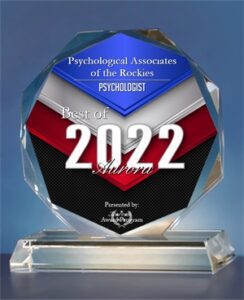EMDR and Anxiety Treatment

Anxiety wants you to believe that it’s a necessary presence in your world, but it’s not.
The power of anxiety lies in the way it works. Anxiety creates neural pathways that influence how you feel about yourself and those around you. The longer you leave your anxiety to its own devices, the more these pathways become engrained in your everyday life.
Unfortunately, the existence of anxiety is a common phenomenon nowadays. It’s a consequence of a world that continues to grow more stressful by the minute.

Fortunately, as common as it is, anxiety disorders are also highly treatable.
At PAR, we use EMDR, in combination with other forms of therapy, to help shift your neurological pathways and minimize the emotional distress caused by anxiety.
Distressing feelings such as anxiety, depression, and other mood disorders often stem from a raw traumatic memory.
Eye Movement Desensitisation and Reprocessing (EMDR) works by taking away the power of a traumatic memory, so it has less effect on your everyday life.
EMDR is one of the very few therapeutic treatments to be officially endorsed by the World Health Organization.
Please consider EMDR if you find yourself struggling with—
- post-traumatic stress disorder (PTSD)
- an overwhelming sense of anxiety
- distressing childhood memories
- an aversion to social interactions
- an inability to trust people
- a general lack of focus and motivation
- Interpersonal struggles / unfulfilling relationship patterns
- uncontrollable mood swings
One of the more advanced applications of EMDR therapy is treating anxiety disorders resulting from sports trauma. Sports trauma is very similar to a traumatic life experience. The emotional content attached to an upsetting memory—like that of a bad game, a significant loss, or an injury—can severely impact everyday life, not to mention athletic performance.
At PAR, we use EMDR to help resolve sports-related traumas so that athletes of every level can perform at their best without being compromised by anxiety driven by a traumatic memory.

